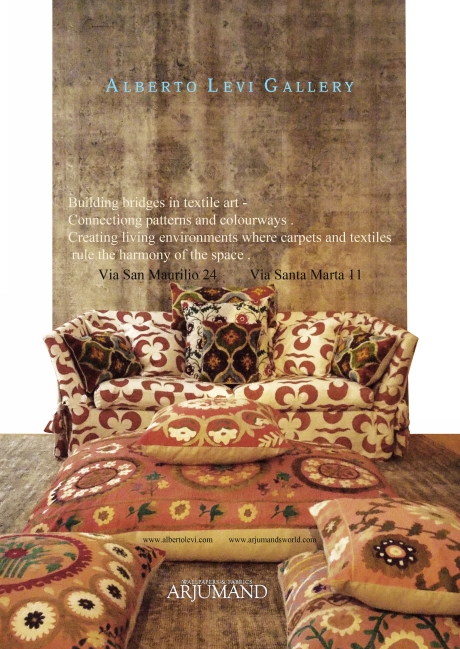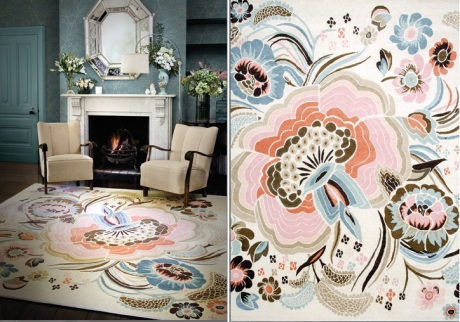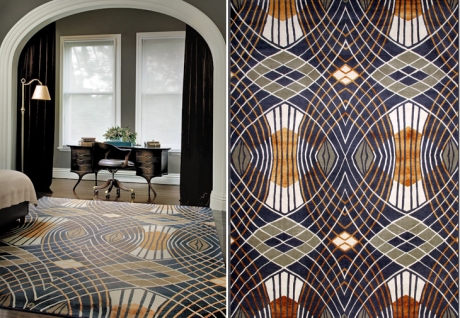Finding treasure in the attic doesn’t just happen to punters on the Antiques Roadshow. The launch yesterday of Warner Textile Archive’s Wendy Bray wallpaper collection (nine designs) at the Fine Cell Work pop-up shop in Mayfair, London, was the result of a rummage round the roof space.

“Umbrellas” and “Stylist” wallpapers by Wendy Bray for Warner Textile Archive. Pillow by Fine Cell Work.
Warner’s Archivist Kate Wigley selected and developed designs Bray created between the 1950s and 1970s to create a wonderful vintage-inspired collection with a fresh 21st century outlook. The elegant octogenarian designer divides her time between England and France, and doesn’t appear to be the type to hide her light under a bushel. Nevertheless Bray’s vintage designs languished for decades in her attic. Adam Gilchrist of Veedon Fleece rugs tells your scribe how Bray was rediscovered a few years ago:
“Finding and redefining Wendy Bray was one of those wonderful coincidences. Her daughter, a great friend of ours, had for some time talked about how her mother had had an active role in textile design during her youth. Then when searching through an attic, great bundles of original artwork were discovered, and we had the privilege of first sight to see if anything could be suitably adapted for our medium.”
Gilchrist purchased Bray’s “joyous, floating, multi-directional” “Feathers” and “Skandi Girls”. “Feathers” presented a “difficult challenge”, but one which Gilchrist knew their weavers could resolve while retaining the movement and the lightness of Bray’s original design.

Ruffled Feathers rug by Veedon Fleece and original design by Wendy Bray. Images courtesy of Veedon Fleece.
Designed (1951) when all things Scandinavian were in vogue, Bray’s “Skandi Girls” was tweaked and updated with a new title by Veedon Fleece.

“Happy Blondes” by Veedon Fleece and original design by Wendy Bray. Images courtesy of Veedon Fleece.
The success of the Veedon Fleece collaboration encouraged Bray to take her portfolio to other design houses resulting in her current collection with Warner Textile Archive. All nine designs are on display at Fine Cell Work’s pop-up shop through Christmas 2012 along with cushions and other textile delights by the UK prisoners who hand-stitch products sold by Fine Cell Work, which introduces your scribe’s final comment. . .
Did your scribe’s slightly irreverent attitude to bushy upper lip twin blade props in last week’s post about Foundation’s Rug Addicts launch upset London’s moustachio mafia? How else to explain the recriminating stares from the Edward Gorey-like furry faces on this Fine Cell Work cushion? The main character even has a 3D moustache. Stitched by a prisoner whose name may not be published, your scribe decided to edge carefully away, make her goodbyes and hurry through London’s deepening Autumn gloam to the safety of her wee East End atelier. DJ

Fine Cell Work moustache cushion stitched by Mr Anonymous

Fine Cell Work cushion stitched by an “anonymous” prisoner


























